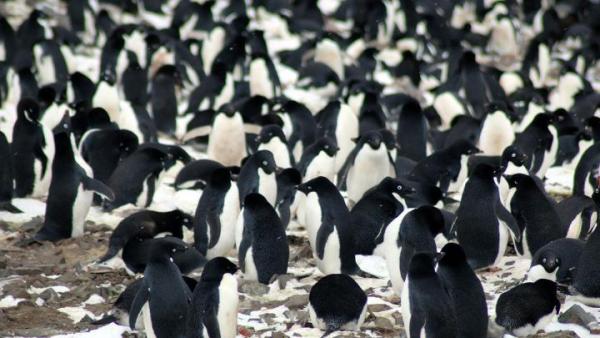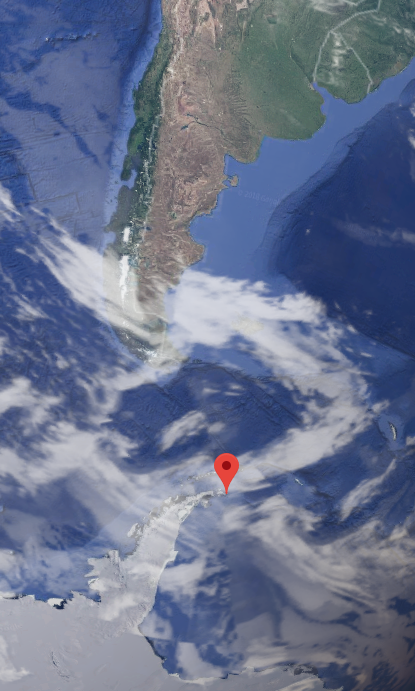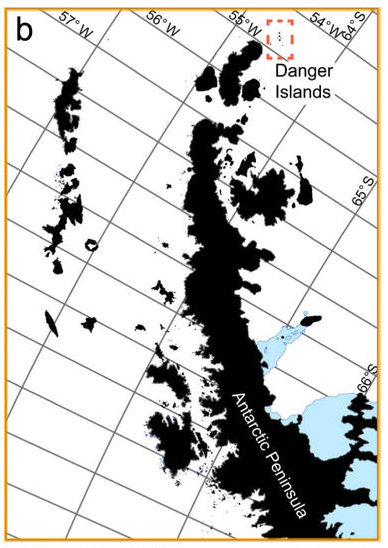
Biologists studying animal life on Antarctica believed that a particular species of penguin was in peril, undergoing a precipitous population decline since the 1970s.
New findings, however, show a massive discovery of the black-and-white seabirds – mainly because researchers missed looking on one group of islands on the tip of the continental peninsula.
The researchers, from the well-known Woods Hole Oceanographic Institution, discovered more than 750,000 nesting pairs of the Adélie penguin – or more than 1.5 million in all – on the Danger Islands archipelago, which consists of nine, small land masses spanning 35 kilometers on Antarctica's northern tip, facing South America.
 "Our estimate is more than three times the abundance estimated by an earlier survey," wrote the study's authors, "largely because several colonies, not known to exist at the time, were missed entirely." The paper, published online Friday in the journal Scientific Reports, adds that the population find on the Antarctic Peninsula was "more than the rest of AP region combined, and include the third and fourth largest Adélie penguin colonies in the world."
"Our estimate is more than three times the abundance estimated by an earlier survey," wrote the study's authors, "largely because several colonies, not known to exist at the time, were missed entirely." The paper, published online Friday in the journal Scientific Reports, adds that the population find on the Antarctic Peninsula was "more than the rest of AP region combined, and include the third and fourth largest Adélie penguin colonies in the world."
The Adélie (pronounced "Ad-DAY-lee") species or Pygoscelis adeliae, was overlooked mainly due to geographic reasons.
"These supercolonies have gone undetected for decades ... partly because of the remoteness of the islands themselves, and partly the treacherous waters that surround them," according to a statement attributed to Heather Lynch, Associate Professor of Ecology & Evolution at Stony Brook University.
So how were these penguins found?
 Uh, by what they left behind after eating.
Uh, by what they left behind after eating.
Studying satellite images of the archipelago, Lynch and NASA colleague Mathew Schwaller discovered "telltale guano stains." A year later, in late 2015, a commercial drone was dispatched over the territories to photographically document the surprising population find, termed by researchers in the study as "the first comprehensive seabird survey of the Danger Islands."
Michael Polito, a Woods Hole guest investigator from Louisiana State University, indicated that this discovery could change the way the region is viewed with respect to indigenous life and the environment.
"Not only do the Danger Islands hold the largest population of Adélie penguins on the Antarctic Peninsula," said the study's co-author, "they also appear to have not suffered the population declines found along the western side of Antarctic Peninsula that are associated with recent climate change."



